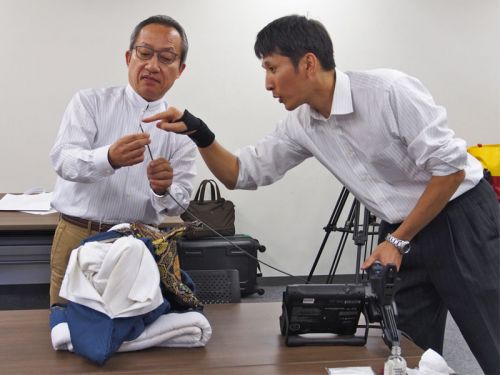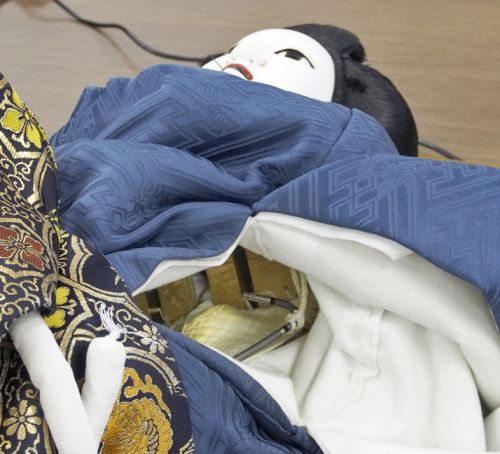Bunraku is a type of traditional Japanese puppetry that is hundreds of years old and is recognized by the United Nations Educational, Scientific, and Cultural Organization (UNESCO) as an intangible cultural heritage. Bunraku puppeteers are recognized by the government of Japan as living national treasures. Documenting this unique art form is an important part of preserving this tradition.
The design of the puppets makes it difficult to record the fine hand and finger movements that puppeteers use to control the puppet’s delicate facial features. We offered to use one of our IPLEX® RX videoscopes to record the puppeteer’s hand movements during a performance. The videoscope’s size and maneuverability made it an ideal tool to document the skill of the puppeteer.
Bunraku dates back to the 17th century in Japan. The puppeteer controls the puppet’s head by means of a wooden handle that extends down from the neck of the puppet; the puppeteer puts his or her hand through a hole in the back of the puppet to access the handle. Space is very tight and the finger movements needed to work the complex mechanisms that control the puppet’s head require a high degree of dexterity. Learning to control the puppets takes many years.
An IPLEX RX videoscope was used to film Mr. Kiritake, one of Japan’s foremost bunraku puppeteers, while he gave a public performance. The far end of the scope was sewn into the puppet so its camera was pointed at the controls for the puppet’s head.
Filming Mr. Kiritake’s performance was challenging. His rapid hand movements caused the videoscope to become dislodged during the performance, making it hard to photograph his entire hand. The videoscope’s flexibility enabled the operator to maneuver the scope back into position, and the video shoot was ultimately a success. The video successfully captured Mr. Kiritake’s hand movements, and the footage was used in a documentary called Japan’s Traditional World-Class Arts.
Get In Touch
.jpg?rev=F13C)



